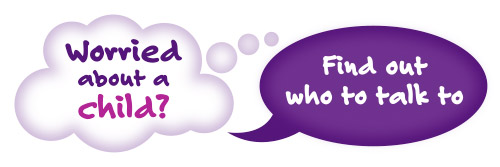What has fostering for 20 years taught me about relationships?


As a foster parent with many years’ experience, I know a lot about relationships. I have a huge amount of training, knowledge and skills under my now bulging belt. Often, I am asked: “what do I get from being a foster carer?” In answer, I honestly feel my life has been enriched way beyond what I could have derived from anything else I could have chosen to do. Yes, there are challenges, but these create personal growth. I am not the same person I was at the beginning of this journey.
I am trauma-informed, I have and continue to learn from the best minds in this field, Bruce Perry, Bessel Van der Kolk, Janina Fisher, Kate Cairns, Peter Levine, Dick Schwartz, Steve Porgess, Dan Hughes, the list goes on. But it is the children I have had the privilege to love and care for that have helped me truly embed all of that knowledge. They have challenged me and changed me for the better. I am more human, more resilient, more connected because of them and, for that, I truly thank them.
Foster carers need skills and knowledge beyond ‘parenting’
Therapeutic parenting requires foster, adoptive and kinship carers to have a level of skill, knowledge and training above what is needed to be a good parent. It takes being trauma-informed, attachment-informed, and an ability to be able to co-regulate with a child who may be in an almost constant state of overwhelm or dysregulation.
My passion in this field is to advocate for the most vulnerable children, the ones with the most complex needs, for they are the ones whose voices I feel are least heard. They are the ones who invariably suffer the most in the earliest days of their lives. Often, they will have experienced multiple adversities and, all too often, abuse from their primary caregivers. This leaves them traumatised and with a disorganised attachment pattern, a pattern of inconsistent and unpredictable behaviour when developing and navigating relationships.
For me, if we think about it in terms of a continuum of vulnerability and need, then at one end you would have children who are securely attached, and have a strong emotional bond with their primary caregivers, but might find themselves in need of short-term care due to circumstances which prevent their primary caregivers from caring for them for a short period of time. At the other end of this continuum would be children who have experienced abuse and neglect by their primary caregivers in their formative years. How children need to be cared for in order to respond to their individual needs can vary enormously.
Children who require only a short period of care away from their parents and who are securely attached are the children who may be best able to thrive by being parented with a secure attachment approach. That is to say, you can attune to their needs, and they will respond by regulating their arousal response and return to a sense of safety and stability. However, I would argue that any further along that continuum and you are moving into the realm of therapeutic parenting, that is to say, caring for a child who has additional needs as a consequence of adversity, that require specialist knowledge and skill in order for the child to heal, recover and thrive. For example, if a child has experienced a neglectful parent who has regularly been unable to meet their child’s needs, then that child may develop an avoidant attachment style, where they may have a tendency to push others away. Children whose behaviour may embody this style may appear to the untrained person to be ‘mature’, ‘independent’ and not needy, but this assumption is wrong and could lead unwittingly to a care giver actually perpetuating some harm that has already been done.
How we promote fostering has an effect on the children who need to be cared for
I feel the way in which we promote fostering in the mainstream media - both editorially and in marketing - does children who are unable to be cared for by their primary caregivers a huge disservice.
All too often adverts for fostering are reductive, they focus on attributes of childhood that are based on an assumption of secure attachment, with no trauma. On the face of it I feel that this could even be said about the Scottish Government’s newly launched recruitment campaign. Taking the message of the campaign in isolation – ‘the ordinary can become the extraordinary’ - I feel is reductive, as for me, it infers that using a secure attachment approach is all that is needed for all fostered children. For example, in the government campaign, under the heading ‘Why Foster’ it is suggested that if you can offer a safe and stable place for a child to grow then it can really make a difference to a child’s life. While this is undoubtedly true, I feel it could go further. Often, regardless of how safe and stable you and your environment are, the nature of trauma is such that it can take a very long time and therapeutic intervention for a child to feel safe. For instance, an environment characterised by peace and tranquility may actually be triggering for a child who is used to a very chaotic, noisy environment. All of the photographs echo this vision of harmony, which I feel glosses over the complex and important work that needs to be undertaken to help a child who has experienced trauma.
I believe we need to move way beyond these simplistic notions of what fostering involves and focus on the qualities of the prospective carers. This is what we would expect to see in any other recruitment drive. If you are advertising for a mechanic for example, you do not make the advert about cars, you focus on the skills and qualities you require from the candidate and attract them by being clear what you can offer them in return, if you have little to offer then don’t expect too much interest. If you lead with how much money you are offering with a very low skill threshold, expect to get interest from people who are not up to the job.
So, what does this reductive messaging mean when fostering is skilled, complex and involves adaptive approaches to building relationships, gaining trust and caring for children? It feels to me too far away from describing what’s needed for the children at the end of the continuum where disorganised attachment and complex trauma sit. What are these children’s hopes of a family experience? One that offers a place of safety, where they feel claimed, loved and accepted and where they can remain for as long as they need to. I would hazard a guess that these children are least likely to experience this type of foster care. I heard it said very succinctly one time that the children who need love the most will ask for it in the most unloving ways.
This is why we need a range of skills and training as carers. The needs and experiences of some children will require specialised therapeutic foster carers who understand the impact of a hyper aroused sympathetic nervous system, or ‘fight or flight’ response, on a child’s ability to self-regulate. Foster carers who understand and can sit comfortably with the duality of their role as parent and therapist. Foster carers who are available to the child they are caring for full time. These are the ways in which experience tells me we can build the relational bonds that are needed if children and young people are to heal, recover and thrive.
*The name has been changed to protect the anonymity of the author.
The views expressed in this blog post are those of the author and may not represent the views or opinions of CELCIS or our funders.
Commenting on the blog posts: sharing comments and perspectives prompted by the posts on this blog are welcome.
CELCIS operates a moderation process so your comment will not go live straight away.


